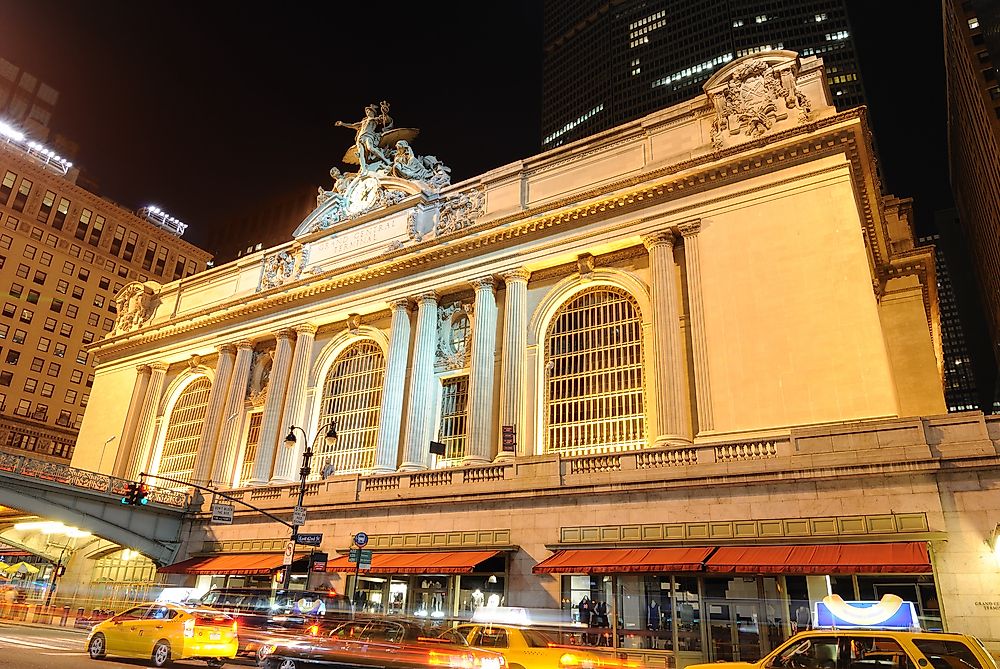Where is the World's Largest Railway Station?

In terms of the number of platforms, the largest railway station in the world is Grand Central Terminal in New York City. Also known as Grand Central Station or Grand Central, the train station is located at the intersection Park Avenue and 42nd Street in Midtown Manhattan, New York, USA. The station serves commuters each day on the Metro-North Railroad with lines to the Bronx and various counties throughout New York and Connecticut. Grand Central Terminal serves a daily average of about 125,000 commuters and about 660 Metro-North trains use the tracks each day. In addition to these routes, there is a link at Grand Central–42nd Street that connects the station to the New York City Subway.
Platforms and Tracks
The station has a whopping 44 platforms, the most in the world, which were built between 1903 and 1913. In addition, there are 67 tracks for use by passengers trains. 41 of these tracks are located on the upper level, while the remaining 26 are on the lower level. The station covers an area of about 19 hectares. The numbering of the tracks depends on their position in the terminal building.
In addition to the public platforms, there is a private platform located beneath the Waldorf Astoria hotel, which is next to the door to Grand Central Station. Information about the secret platform is limited, but reports suggest it was used by US President Franklin D. Roosevelt to travel in and out of New York City. The platform has never been used for regular passenger service although, there was a time when it was utilized as a loading point.
Design and Construction
The New York Central Railroad designed Grand Central Terminal to rival its main competitor, Pennsylvania Railroad, which owned and operated the historic orignal Pennsylvania Station. New York Central decided to create a competition in 1903 to solicit designs for the new station. After the competition ended, the design contract was awarded to two architectural firms: Reed & Stem and Warren & Wetmore. It was determined that Reed & Stem would be responsible for the overall design of the station, while Warren & Wetmore were tasked with the architectural details.
The enormous scale of the project became evident after construction began and about 3.2 million cubic yards of ground had to be excavated. At least 300 cars were used to remove about 1,000 cubic yards of debris each day. The depth of the construction site averaged around 45 feet, and it employed at least 10,000 workers. The new terminal was completed in 1913 and officially opened on February 2, 1913. At least 150,000 people visited the station in less than a day after it opened.
Important Landmark
Due to its unique architecture and design, the station is classified as a US National Historic Landmark. As a result, millions of visitors from all around the world visit the station. In 2013 alone, more than 20 million visitors, excluding passengers, visited the station. Additionally, images of the station have been included in popular films, and filmakers have commonly used the station as a symbol of arriving in New York City.











